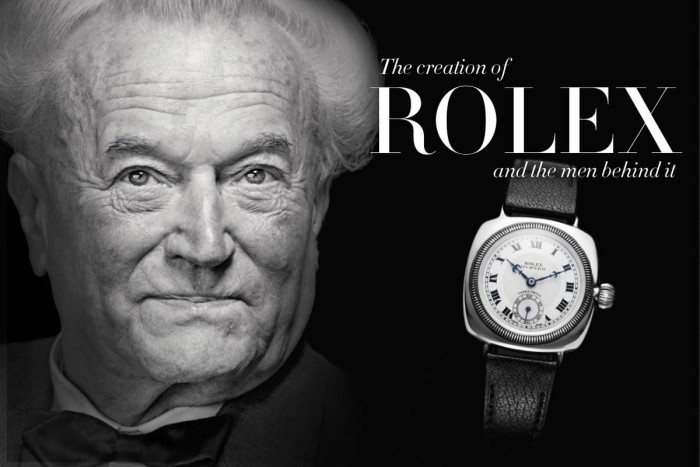Rolex: How did they manage to create the world's most famous watch brand?
The most important accessory for men is the watch. We like to wear a watch on our wrist, even though it is no longer as functional as in the past. Who wouldn't want a Rolex watch on their wrist today? We can't give you a Rolex, but we can present the story of the Rolex:

It was founded in London in 1905 by Hans Wilsdorf and Alfred Davis. Although it was founded in England, today it is based in Switzerland. It is considered one of the strongest brands in the world. In the first years of the company's establishment, the watches produced were named after their founders, namely Wilsdorf and Davis. But then, in 1919, they moved to Genoa, Switzerland. After the move, they changed its name to Rolex. Among the biggest competitors of the brand today are Patek Philippe, Omega and Panerai. Rolex is frequently mentioned not only with the quality watches it produces, but also with the events it sponsors.
How was Rolex founded?
Rolex was founded in 1902 by Hans Wilsdorf and his sister's husband, Alfred Davis. These two started to produce high-end watches by combining parts imported from Hermann Aegler with quality watch cases from companies like Dennison. Of course, it was not possible to see the Rolex writing on the watches they produced in the first years. When the inside of the strap was looked carefully, the W&D stamp was visible on the first watches produced by the brand.
Creation of the brand
1908 was an important year for Rolex. Because the two partners went through a name change and bought the rights to the Rolex name and opened their first office in Switzerland in La Chaux de Fonds. Why did they choose the Rolex name? Because they wanted the name of the brand to be easily pronounced in every language. That's why a two-syllable, clear-pronounced word like Rolex came across as a very apt brand name for them.
The first of the events that registered the quality of the brand was the A Class certificate they received from Kew Obervatory in 1914. Receiving this certificate for the clarity of the watches in showing the time was a very important step for the brand.
World War I, of course, also affected Rolex. During the war, their backs were crushed by taxes on luxury goods. In 1919 they decided to withdraw from the British market. At the same time, it became difficult to import silver and gold, because although they were the raw material of watches, their prices were increasing. With Wilsdorf's decision to move to Genoa, Rolex changed its headquarters. In the following years, the name of the company has changed many times, but the Rolex part has always remained. The company, which was first the Rolex Watch Company, then evolved into Montres Rolex and finally Rolex SA.
Wilsdorf, who wanted to produce watches that appeal not only to the elite class but also to the middle class, founded Tudor, another watch brand in those years. Tudor, which produces watches in a sub-segment, entered the market in 1946. Wilsdorf, who died in 1960, sat in the management chair of both companies until the last day of his life.
Innovations
Rolex has achieved many firsts among the companies producing wristwatches. For example, they produced the first wristwatch. They put the first water resistant (up to 100 meters) watch on sale.
Here are Rolex's firsts:
1910 – Becomes the first wristwatch to receive the Swiss Certificate in chronometric accuracy
1926 – The first waterproof wristwatch is launched, which also revolutionized the market. Launched in 1926, the Oyster series (a series of water-resistant wristwatches) is still in production today.
1945 – The first wristwatch with an automatic calendar
1954 – The first watch to show two different time zones simultaneously
Prior to 1931, Rolex only produced manually adjusted watches. In 1931, a self-adjusting watch called the bubbleback was introduced. The mechanisms inside the watch were able to self-adjust with the help of the movements on the user's arm. This technology has made the use of wristwatches both more functional and more reliable.
Towards the end of the 1960s (and also into the early 1970s), engineers working at Rolex had an important role in quartz, the technology of the time. Rolex signed an agreement with 16 other watch manufacturers and started working together. Beta 21 Quartz, which emerged thanks to this cooperation, would of course take its place in Rolex watches in the coming years.
Who is the CEO of the company today?
The current CEO of Rolex watches is Jean Frederic Dufour. Dufour is the sixth person to sit in the management seat throughout the history of Rolex watches. Dufour has strengthened his expertise in the field by being a manager at famous watch brands such as Zenith and TAG Heuer throughout his career.
